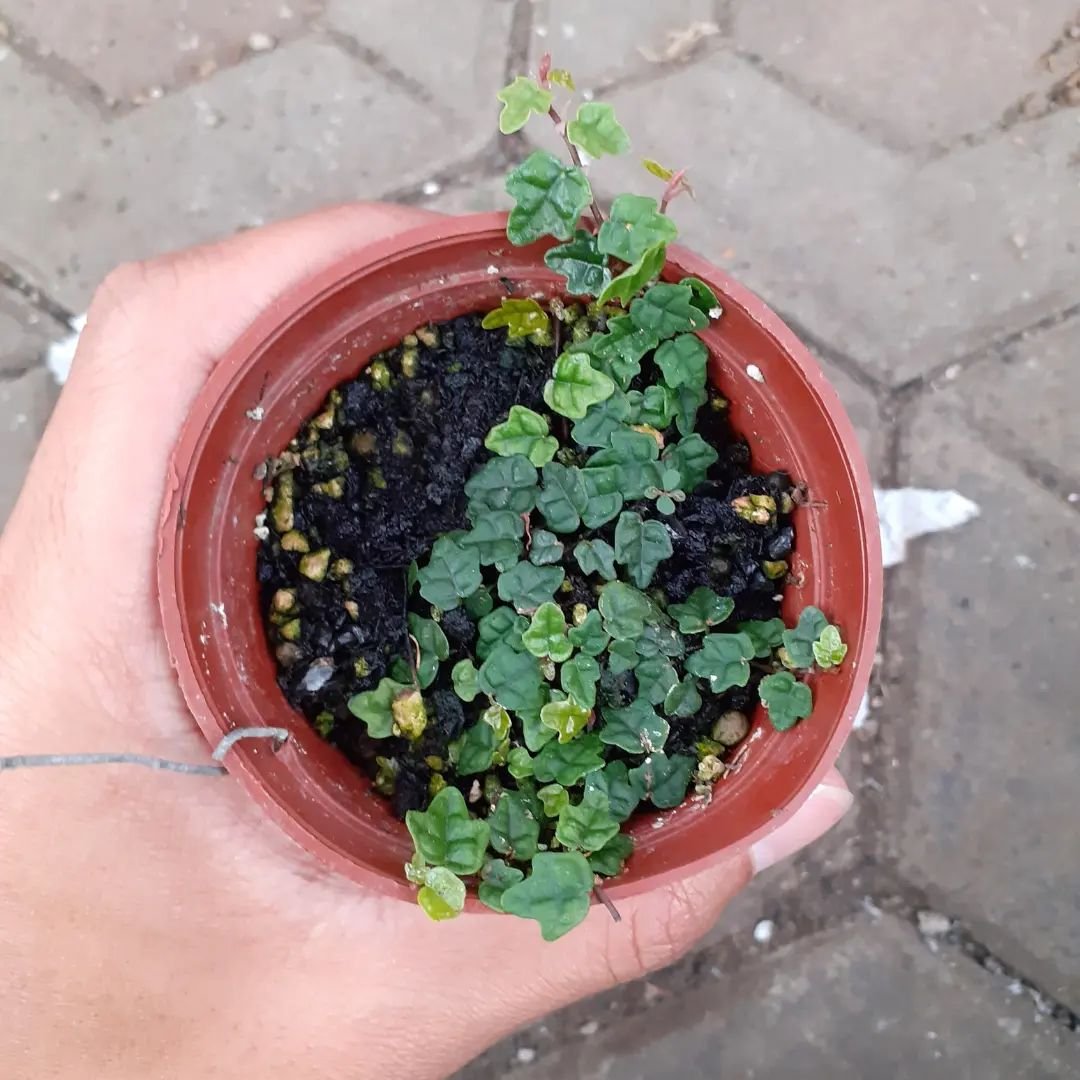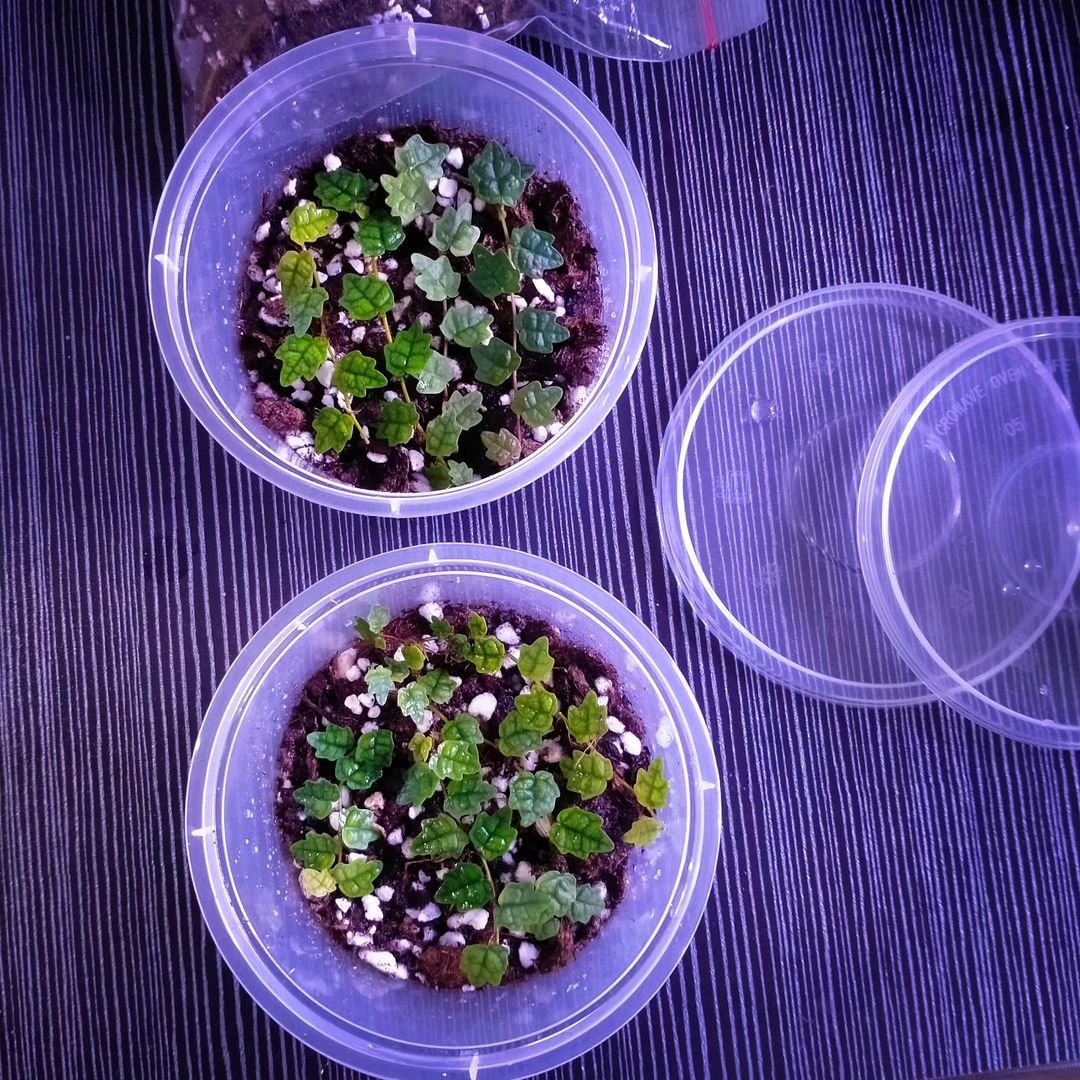If you’ve ever come across creeping figs with tiny frog-shaped or oak-shaped leaves hanging gracefully, you’ve encountered the captivating String of Frogs, also known as the Oak Leaf Creeping Fig. In this comprehensive guide, we will delve into the world of this unique houseplant, providing you with everything you need to know to successfully grow and care for it in your collection.
The String of Frogs, scientifically known as Ficus pumila Quercifolia, is an evergreen, perennial creeping ficus species renowned for its distinctive petite oak-shaped leaves that bear a striking resemblance to squatting frogs. Native to tropical and subtropical regions of East Asia, this plant has earned its common name, the Oak Leaf Creeping Fig, due to its tiny lobed leaves that mimic the appearance of oak leaves.
Botanical Classification
To better understand this fascinating plant, let’s delve into its botanical classification:
- Kingdom: Plantae
- Clade: Tracheophytes
- Clade: Angiosperms
- Clade: Eudicots
- Clade: Rosids
- Order: Rosales
- Family: Moraceae
- Genus: Ficus
- Species: pumila Quercifolia
USDA Growing Zone

String of Frogs thrives in USDA hardiness zones 9 to 11, encompassing tropical regions such as Hawaii and southern states like Texas, California, and Florida. These zones experience mild winter temperatures ranging from -6 to 4 degrees Celsius, with warm daytime temperatures even during winter. The absence of frost and ample warmth make these regions ideal for cultivating this tropical beauty.
Special Features
What sets the String of Frogs apart are its charming oak-shaped or frog-shaped leaves, making it an excellent ground cover plant and a stunning addition to hanging baskets. Its low-maintenance nature and ease of propagation further enhance its appeal.
Toxicity
It’s essential to note that String of Frogs can be toxic to both humans and pets, including dogs and cats. The plant produces a milky latex that can cause skin irritation and allergies upon contact. Ingesting any part of the plant can lead to symptoms such as vomiting, diarrhea, skin inflammation, stomach pain, decreased appetite, dermatitis, seizures, and more. Caution should be exercised when handling this plant, especially around children and pets.
Can String of Frogs Work in a Terrarium?

Absolutely! The String of Frogs is an excellent choice for a terrarium due to its unique leaves, trailing growth habit, and suitability for hanging baskets. Its quirky appearance adds an element of intrigue to your terrarium while filling in gaps with lush greenery.
Variegated String of Frogs

For those seeking a more visually striking variation, the Variegated String of Frogs is a captivating choice. This variety features white achlorophyllous parts, creating a beautiful contrast with the green foliage. Variegation can occur naturally through mutation or be induced artificially for decorative purposes, making it a stunning addition to your succulent collection.
Care Guidelines

Now that you’re acquainted with the String of Frogs, let’s explore how to care for this charming houseplant.
Light
String of Frogs thrives in partially diffused light. Prolonged exposure to direct sunlight can lead to leaf scorching and necrosis. Outdoors, it fares well under the canopy of trees, where it receives filtered light. Indoors, place it near east or north-facing windowsills or provide artificial grow lights to ensure it receives adequate light without becoming deficient.
Temperature
Maintaining an optimal temperature range of 20 to 30 degrees Celsius is crucial for the well-being of your String of Frogs. As a tropical plant, it can tolerate temperatures as low as 10 degrees Celsius and as high as 35 degrees Celsius. Ensuring a cool, humid environment within this temperature range is key to its success.
Soil
This plant thrives in well-draining, loamy or sandy loamy soil with a neutral pH. Due to its delicate roots, it’s essential to avoid soil that retains excess moisture, as this can lead to root rot. Enhance the soil’s drainage by incorporating materials such as perlite, pumice, sphagnum moss, small pebbles, and organic matter.
Water
String of Frogs requires moderate watering. Allow the top 2 inches of soil to dry out before watering, which typically translates to once a week. Adjust the watering frequency in response to extreme temperature fluctuations, increasing it during hot spells and reducing it to once every two weeks during winter. Always ensure that the soil remains moist but not waterlogged.
Pro Tip: Test soil moisture by inserting a finger 2 cm into the soil. If the soil adheres to your finger, it doesn’t require watering. If your finger emerges clean, it’s time to water the plant, taking care to water at the root level without putting pressure on the stem.
Humidity
String of Frogs thrives in a cool, humid environment, with an ideal humidity range of 60% to 80%. This elevated humidity contributes to its glossy leaf appearance. You can maintain humidity by misting the plant, using a humidifier, or employing the pebble tray method, especially in areas with lower humidity levels.
Fertilizer
While not mandatory, fertilizing your plant once a month can promote healthy growth. Use a diluted liquid fertilizer, preferably during the summer and spring months when the plant experiences faster growth.
Potting and Repotting

When potting your String of Frogs, select a pot size that accommodates its growth and the available space in your environment. Opt for earthen pots with drainage holes to facilitate proper drainage. Add a well-draining soil mix to the pot, insert the rooted plant, and maintain soil moisture in a shaded area.
Repotting is typically necessary every 2 to 3 years as soil nutrients become depleted. Select a larger pot during repotting, ensuring the new soil is nutrient-rich.
Training and Pruning

Prune diseased or dead twigs as needed. Training can be conducted annually or semi-annually to achieve the desired size and shape. The plant’s growth rate accelerates after training and pruning.
String of Frogs Propagation

Propagation of the String of Frogs can be achieved through stem cuttings, leaf cuttings, and seeds. Among these methods, stem cuttings are the most favored. Here’s a brief overview of each method:
By Seeds
- Prepare a moist, well-draining soil mix.
- Plant the seeds in the mix and keep the pot in a warm, diffused sunlight location.
- Wait for rooting to occur in approximately 2-3 weeks.
- Transplant the rooted plants to desired locations.
By Leaf Cuttings
- Select a healthy, well-lobed leaf for propagation.
- Cut the leaf, remove the petiole, and dip the cut end in rooting hormone.
- Plant the leaf cuttings in well-draining potting mix, keeping them in a shaded area.
- Rooting should occur in 2-8 weeks, after which the plants can be transplanted.
By Stem Cuttings
Propagation by stem cuttings is the most straightforward method:
- Choose a healthy stem with 2-3 nodes, trimming it below the node.
- Prepare a moist, well-draining substrate with sphagnum moss.
- Dip the cutting in rooting hormone and plant it in the medium with the node submerged.
- Keep the pot in a humid environment with diffused sunlight or grow lights until rooting takes place, typically within 2-6 weeks.
- Transplant the rooted cuttings under normal growing conditions.
Price
The price of a potted String of Frogs can vary depending on factors such as the number of leaves, pot size, and shipping distance. Typically, prices range from $8 to $26. You can conveniently purchase this plant online from various retailers.
Common Problems

String of Frogs can encounter issues such as sun scorching, leaf spots, yellowing, browning, root rot, wilting, and pest infestations. Common pests include spider mites, mealybugs, scales, and aphids. To mitigate these problems, maintain optimal growing conditions, use pesticides or horticultural oil as needed, or mechanically remove visible pests with cotton balls or swabs dipped in alcohol.
Pros and Cons
Here’s a quick summary of the pros and cons of growing String of Frogs:
Pros:
- Beautiful and unique leaves
- Low maintenance
- Suitable for ground cover and hanging baskets
- Tolerant of small spaces
Cons:
- Sap toxicity can be harmful
- Sensitive to direct sunlight and dry environments
- Occasional physiological disorders may occur
Final Words
Adding a String of Frogs to your houseplant collection is sure to captivate visitors with its charming, frog-like leaves trailing gracefully from hanging baskets. As a beginner, you can successfully grow and enjoy this delightful climber by providing it with the care it deserves. The satisfaction of watching each leaf thrive will undoubtedly make your efforts worthwhile. So, why not give it a try?
FAQs
Q: Is Ficus quercifolia a String of Frogs? A: Yes, Ficus quercifolia is another name for String of Frogs, also known as Oak Leaf Creeping Fig. The botanical name Ficus pumila quercifolia reflects its oak-shaped or lobed squatting frog-shaped leaves.
Q: Is String of Frogs Good for First-Time Plant Owners? A: Yes, String of Frogs can be a suitable choice for first-time plant owners. While it may require some attention to environmental conditions, its low-maintenance nature makes it a manageable addition to your houseplant collection.
Pingback: Alocasia Black Velvet Care - Gardener's School
Pingback: String of Dolphins: How to Care Your Rare Plant
Wow, fantastic weblog structure! How lengthy
have you ever been running a blog for? you
made blogging look easy. The full look of your web site is excellent, let alone
the content material! You can see similar here ecommerce